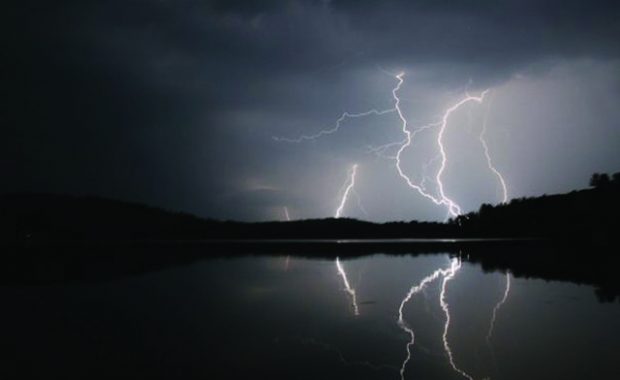PALMER RAPIDS – On July 17, a 61-year-old man was struck by lightning near the intersection of Palmer Rapids Road and Homestead Road beside the Madawaska River.
According to the Chief of the County of Renfrew Paramedic Service, the bolt struck a tree first and then hit the man indirectly at around 3 p.m.
“The man was struck by lightning on the river’s edge and the paramedics brought him out of the river. A tree was hit first and the blast from that strike threw him to the ground,” he noted.
Referencing some media-related confusion about the event, Nolan wanted to add that the man was indeed out of the water when the lightning hit him.
“He didn’t actually fall – he was thrown to the ground by the strike and because of that, he had a lot of muscular-related complaints and pain management issues,” Nolan said.
After being struck by the electrical blast, the man was transported by paramedics to St. Francis Memorial Hospital in Barry are Bay, and then rushed by air ambulance to Ottawa for further observation.
Nolan wouldn’t speak to a recent trend in the growing number of people getting struck by lightning but he did speak to the number of recent severe weather warnings.
“I don’t know if there’s a trend in people being struck by lightning but I will say that there is a definite trend in the amount of severe weather we are getting as that same storm had a tornado warning attached to it,” he added.
According to emedicine.com, between the years of 1959 to 1995, lightning has been responsible for more than 3,000 deaths and 10,000 injuries in North America.
Because of the isolated nature of lightning strikes, though, up to 50 per cent of lightning-related injuries are usually unreported.
Luckily, for the man involved, the paramedics were alerted.
With more and more reported cases of extreme weather all across Canada and the United States, it’s important to note the full physical ramifications of being struck by lightning.
According to emedicine.com, “Injuries range from tiny static electricity ̶ like exposures to cardiac arrest…Few individuals experience the full energy of a lightning strike because only about three to five per cent of injuries are from a direct strike.
Most of the energy is mediated by other factors including the ground, the tree, or other object that, once hit, transmits the energy to the person.
In fact, less than one third of affected persons have signs of burns. When burns do occur, they are usually superficial.”
The website goes on to also discuss the topic of internal burns, or myoglobinuria, which can result from the electric pulse surging in and through the body.
Story continues in the July 25 issue of The Valley Gazette.
